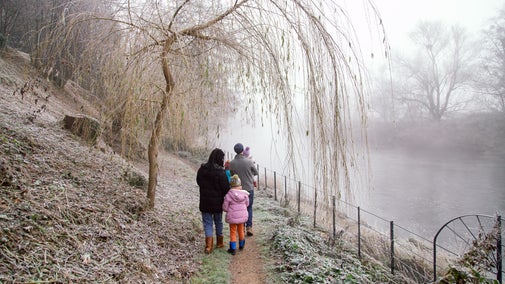Beacon Hill, Juniper Bank and Aston Wood walk
Oxfordshire, Buckinghamshire & Berkshire
Starting at Aston Rowant National Nature Reserve, located high on the Chiltern Escarpment and offering views over the Vale of Oxford, this walk will take you through acres of chalk grassland with wild flowers. Moving on to the woodland areas of Juniper Bank and Aston Wood, you'll encounter an altogether different landscape, with chances to spot a wide range of flowers, butterflies, birds, deer and unusual fungi.
Near to
Chilterns CountrysideStart point
Aston Rowant National Nature Reserve car park. Grid ref: SU731966Trail information
Walking in history
Since the Roman era, people have faced the test of transporting people and goods from the lowlands of the Oxford Vale, across the steep Chiltern Escarpment, to London. This walk explores various ways in which this challenge has been tackled over time. Steps 4 and 9 are part the Aston Rowant Discovery Trail (ARDT).
More near here
Coombe Hill and Chequers trail
Enjoy a moderately energetic circular walk from Coombe Hill, taking in views across the Aylesbury Vale. You'll wander through woodlands, past rare chalk grassland and the pretty village of Ellesborough.

Chiltern Hills three-in-one walk
Discover a challenging 8½-mile scenic walk linking three National Trust places in the Chiltern Hills: West Wycombe, Bradenham and Hughenden. Longer and shorter routes can be completed depending on your choice.

Hambleden Valley, Turville and Fingest
Explore the wooded valleys of the Chiltern Hills on this 9.5-mile circular walk, passing through some of the area's prettiest villages.

Coombe Hill Woodland Walk
Follow this gentle circular trail in the Chilterns through beech woodland to the top of Coombe Hill, with far-reaching views from its summit.

Get in touch
Chilterns Countryside, c/o Hughenden estate, High Wycombe, Buckinghamshire, HP14 4LA
Our partners

We’ve partnered with Cotswold Outdoor to help everyone make the most of their time outdoors in the places we care for.
You might also be interested in
Walking in Oxfordshire, Buckinghamshire and Berkshire
From gentle strolls for little legs to longer hikes through the rolling Chiltern hills, these are some of the best walks in Oxfordshire, Buckinghamshire and Berkshire.

Walking
Explore some of the finest landscapes in our care on coastal paths, accessible trails, woodland walks and everything in between. Find the best places to walk near you.

Visiting Aston Wood and Juniper Bank in the Chilterns Countryside
Discover Aston Wood and Juniper Bank in the Chiltern Hills. These woodland sites are ripe for exploring, with wildlife to spot and trails to follow.

Follow the Countryside Code
Help to look after National Trust places by observing a few simple guidelines during your visit and following the Countryside Code.

Staying safe at National Trust places
The special places in National Trust care sometimes come with a few risks for visitors, be it coastline or countryside. Find out how to keep safe throughout your visits.

Cotswold Outdoor: our exclusive walking partner
Learn about the National Trust’s ongoing partnership with Cotswold Outdoor. Find out how they help us care for precious places and the exclusive discount available for National Trust supporters.



